Openreach CEO’s Call for Change to Boost UK Fibre Rollout Meets Opposition
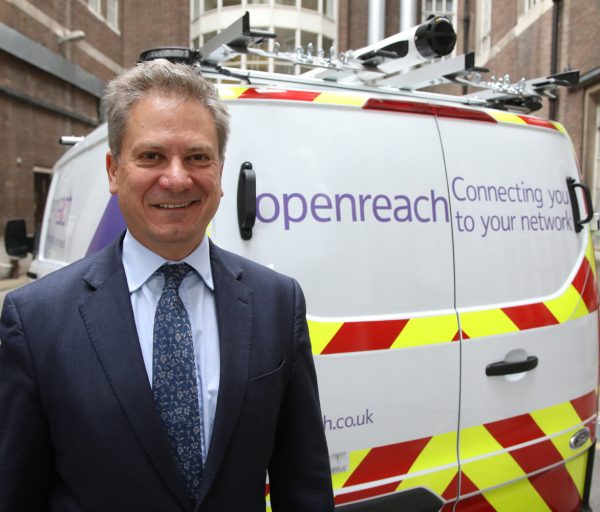
The CEO of network access provider Openreach, Clive Selley, has once again called on the government to help boost the UK roll-out of gigabit-capable broadband networks by making a number of key changes to several new bills. But gaining acceptance of these calls has proven difficult, particularly with a group of cross-party MPs campaigning for the opposite.
At present, Openreach’s growing Fibre-to-the-Premises (FTTP) network already covers around 18 million premises (there are around 32.5m across the United Kingdom) and they aim to reach 25 million by December 2026. The operator has also expressed an ambition to reach “up to” 30 million by 2030, which was given a boost last month after Ofcom’s latest Telecoms Market Review (TAR) showed it wasn’t going to upset the apple cart.
Despite this, Clive Selley has long been campaigning for the government to make more changes to help move things along, many of which are also supported by the wider industry (here, here and here). But there are differences of agreement on the detail between broadband operators, as nobody wants to hand Openreach an unfair advantage (e.g. the ability to upgrade MDUs that others cannot access in the same way).
Advertisement
The most common calls tend to echo a strong desire for the full embracement of flexi-permits to boost street works and a push for easier access to run new fibre into large residential buildings (MDUs), such as in cases where operators struggle to identify or communicate with the building owner(s). The latter impacts around a million UK tenants.
Clive Selley, CEO of Openreach, said (Mail on Sunday):
“We work in the streets, we work in the pavements and we work in the roads. So we ask for permission a third of a million times a year. Councils are under cost and staffing pressures, so this generates huge amounts of work.
Pushing [flexi-permits] through at pace wouldn’t just reduce workload, it would increase the pace at which we could build, and take the cost away from the councils. It’s a win-win with no taxpayer money involved.
…
In many of the apartment blocks in London, the owner’s address is a PO Box in the British Virgin Islands. So you write them a letter and will not hear back.”
The ability to deliver changes like this would require new legislation, which Openreach and others envisage as coming through tweaks to the new Renters’ Rights Bill (here) and the Planning and Infrastructure Bill (here). But so far the first draft of both bills have largely appeared to exclude such calls, although future amendments may yet see them being debated over the coming months.
On top of that, Openreach’s push for change will meet opposition from MPs in different parties, although it’s not yet clear how much success they will have when or if such amendments come up for debate in parliament.
Mark Francois, Conservative MP for Rayleigh and Wickford, said:
“Openreach have a bloomin’ cheek. They have already had years to install fibre networks and should really have finished the job by now. Why should long-suffering motorists have to endure more frustrating delays because Openreach can’t get the job done efficiently in the first place?”
The above comment is interesting as most people with knowledge of such networks recognise that deploying optical fibre cables down almost every single street and lane in the UK was always going to take around a decade or more to complete, with payback on that also taking 10-15 years to realise. Hence why the government ultimately set the Project Gigabit goal for achieving nationwide (c.99%) coverage of gigabit-capable broadband as 2030.
Advertisement
Openreach only started (or re-started) large scale deployments of FTTP technology in 2018 and then took several years to ramp that up, but there’s a limit to how fast you can go on a commercial basis. On the other hand, it could be argued that the network operator’s effective abandonment of their original FTTP roll-out (here), which started in 2009/10 before stalling around 2012/13 for some years, does mean that they could have got here much faster if they really wanted.
However, it was also clear in 2012/13 that Openreach hadn’t got the right systems, processes or machinery necessary to conduct both a fast and truly economically efficient deployment. This took several years to correct. But it wasn’t until rivals, like CityFibre, really began posing a serious threat to their copper centric focus that all of this finally got resolved.
Time will tell whether network operators get their way in the new bills currently passing through parliament, although even without that we’d still expect the government’s core coverage goals to be largely achievable by the current target. But whether or not everybody (e.g. some MDU tenants) will be able to access that remains to be seen.
Mark is a professional technology writer, IT consultant and computer engineer from Dorset (England), he also founded ISPreview in 1999 and enjoys analysing the latest telecoms and broadband developments. Find me on X (Twitter), Mastodon, Facebook, BlueSky, Threads.net and Linkedin.
« Ofcom Grant Kepler a UK Licence for Small Broadband Satellites





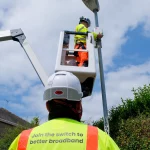



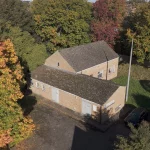


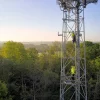
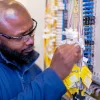







































There is no point making any legislative changes. Whole communities are already simply observers as code operators install entirely unnecessary duplicate networks in urban areas throughout the UK. Legislation that was intended to ensure that urban and hard to reach areas received reliable, affordable FTTP broadband, was too loosely worded to prevent exploitation by under-regulated code operators. The intention to enforce sharing of pre-existing suitable infrastructure was also so weakly worded that most operators simply ignored the requirement amid claims (never effectively investigated by OFCOM because those involved never lodged complaints!) that other parties wouldn’t engage fairly or effectively.
Most code operators already routinely breach their permits by: failing to display ‘works intended’ posters; starting work earlier; finishing later; not complying with the date limits on their permits; not complying with H&S regulations; not working within the street mentioned on their permits; breaching the terms on their code of practice. And the majority of Local Authorities aren’t even bothering to check for compliance because they simply don’t have the manpower or inclination (brown envelopes abound ) to fight these cowboys, despite huge volumes of complaints from residents.
The Legislation requires that where installations are necessary, code operators should install underground cabling wherever PRACTICABLE to avoid the proliferation of telegraph poles and overhead cables. Code operators insist that it is MORE PRACTICABLE to install poles than underground for time and cost reasons, hence the delightful proliferation we are seeing across the UK!
OFCOM are an entirely pointless organisation that has no powers and no significant influence over the FTTP industry, other than collecting money to pay their own employees wages.
Successive governments have encouraged code operators to behave like lawless vandals and have never done anything more than make empty threats (as demonstrated in the almost identical wording of correspondence from Ministers ).
So, as I said, ‘flexi-permits’ (legal or not), are already happening on our streets. There is no point changing legislation. Just sit back and watch our skyline disappear whilst we are encompassed in a spiders-web ceiling of overhead cables.
What AI system did you use to generate that lot?
Early starts are explicitly permitted and encouraged where agreed by local authority.
Late finishes permits can be varied and this is specifically covered.
Claiming councillors are corrupt and every telco besides KCOM are liars has been written here before.
Julie or a new player?
Openreach have dragged their heels while extracting as much profit as possible out of their old copper infrastructure. Now that it suits them to switch to fibre, they suddenly want to be given an easy ride.
I am glad someone else realises that. i have been saying something like that for years. The copper cable here have been creaking for years, 20 years ago I was told it needed to be replaced, and it never was. Too late now.
The only reason Openreach enabled this city for cable when they did was because of Zzoomm, they would deny it.
Still, next year they will have more competition here, which surprised me.
BT has struggled to survive. It has done relatively well despite all of the government interference. You might want to take a look at the actual profits before making invented claims.
Quite a comment there, but he’s not wrong openreach has had two decades to crack on with FTTP and instead are still muddling about worrying about getting into MDUs which already have PIA fibre from two other ISPs!!
Community fibre and Hyperoptic have managed to work with the MDUs at scale using existing legislation. Please can someone explain why Openreach need a change in the rules, so they can overbuild them more easily?
Why would that be desirable to anyone except openreach?
As has been explained repeatedly, this is not about big blocks of flats that are easy to access. It’s about small blocks, often sub divided Victorian homes that altnets have no intention of reaching and have already been left behind as they’ve built in many areas. The solution being proposed is also completely pro competition, giving a tenant the right to request fttp from ANY provider.
@Alex:
It is about big blocks of flats as well. Large multi-tenancy buildings are not even on the radar.
really how will two other providers have PIA — sounds very odd your comment and doesnt make a lot of sense
Does look like the MP has gone for a sound byte without understanding the massive complexity and sphere volume in 25 million.
Equally Virgin have had years to cover the entire country, or KCom the whole of Hull.
A permit that encouraged a dig street once and install universal duct that has to be available under a form of PIA for all operators would reduce the number of digs for the same road.
Maybe a patch panel standard, approved by OffCom, for MDUs would allow multiple operators to supply MDUs All internal fibre being installed once but the freedom to swap providers at a single incomer area.
KCOM almost have covered the whole of Hull, and Virgin Media (through Nexfibre and Project Mustang overbuild of their old cable network) is attempting to bring full XGS-PON to their entire existing customer base plus a substantial expansion.
Compared to this, Openreach’s progress does seem slow and the track record points to them wasting time and money on deploying FTTC until much too late in the game. My house has just gone from ADSL-only to FTTC provided as SOGEA on Openreach within the past year and a half. Even then, they’ve only bothered because of a combination of competitive pressure from Gigaclear and because they want to close the local exchange as part of the Exchange Exit programme and they need everyone off ADSL to do it easily!
Unfortunately, that is not the case. You not only need the process and the technology solutions, you also need the funding – which was not available for two extended periods because of debt and because of the Global Financial Crisis.
Openreach is not KCOM or Virgin, Openreach is supposed to be a nationwide network, they got a network that was dead cheap, and they carried on getting as much as they could pout of the creaking network for years and over charging for the service. Now they have more competition than ever and the thing that was a dead cert to make them money, the humble home phone, is vanishing.
More competition is great, if we can;t have dark fibre, then different networks is the way to go.
Openreach is a regulatory instrument created by Ofcom. If you have any issues with what they charged or invested in historically, your beef is with the regulator. As soon as Ofcom made it viable for Openreach to invest in fibre, they did, and they’ve built faster than any other company in Europe has.
Everyone is also forgetting the Ofcom strategic review in 2016/17 that stalled any progress with FTTP until it was complete. No-one was willing to lend BT money to build a network that it might then have had to give away.
The government’s BDUK programme also drove spending on FTTC because it prioritised covering the greatest number of homes in the shortest time for the least spend. FTTC always comes out top against those measures.
@Ad47uk:
The copper network is not dead cheap, it is very expensive. BT also did not have just one network they had something like 27 covering the country at the end of the 1990s.
Such product already exists, it’s called 4fibre… great idea for MDUs
@Fara82Light, what I meant was that the networks was sold off dead cheap when it privatised, and the tax payers have been paying for it with high line rental prices and creaky infrastructure for years.
But that seems to be the norm, it was the same when gas, electric and water were privatised.
At least now with broadband, we do have a choice and even with energy we do to a certain degree, just a shame we don’t have any choice with water.
@Ad47uk:
No, the network was not sold off on the cheap No taxpayers were not short-changed. No BT did not stand still and rip-off its customers.
It took BT nearly 15 years to transition into a business again after privatisation. During that time it set in motion the transition to an IP network starting with the elimination of virtually everything it had inherited from the GPO. That transition was funded by BT. It has since been nearly bankrupted twice without help from the government. It has incurred additional costs and delays due to 2007/2008, COVID and the Hauwei swap-out yet it is still on target to achieve its FTTP objectives. It achieve more if the constraints on the rollout and the government interventions where removed.
@Fara82Light
Yes, it was sold on the cheap,
https://moneyweek.com/417238/3-december-1984-bt-is-sold-off-in-a-gamble-over-privatisation
Granted it the share price now is not much better and with inflation could be worth less, that is why someone I knew sold his off a few years ago.
oh come on they stood still for years, it was only when they had little choice to but to update, that they updated, and it is only the altnets that are pushing BT and even then BT FTTP network is out of date before it is fully built.
The U.K is way behind some other countries, like Sweden.
As for Bt going bankrupt, it would not have been allowed to, the government would have rescued it.
BT have constraints because it had such an advantage over new start-ups.
As I have said before, we should have had dark fibre in the U.K, government owned and then different providers use it. This building different networks are wasteful, but this is the way it is now and too late to do anything about it.
Just imagine if each energy provider built a different grid and cables to supply their customers.
@ Ad47uk:
BT was not sold on the cheap, it was sold at the market rating for a high risk asset.
@ Ad47uk:
Again, BT was not standing still. You conveniently forget all the outside factors, including finance, market confidence, regulation, government interference, and the company’s financial health, to fit your narrative.
@Ad47uk:
BT going bankrupt: The government was prepared to allow a change in ownership on the markets if BT was not able to turn around its own fortunes. Potential buyers included the French.
@Ad47uk: Many people make claims that we should do this and we should do that, but they never explain how any of their aspirations should be founded, how they would be delivered and what the impact would be. Meanwhile, the real world is very messy a factor which puts paid to many aspirations without substance.
Openreach’s call for taxpayer funding only makes sense if it were not still installing full fibre in streets already served by other open access providers such as Cityfibre.
This is not a call for public funding in any way. The law changes being proposed would in fact save the tax payer money (they cost nothing to implement, they would save local authorities time and expenses, and they would avoid creating future ‘not spots’ which will need to be filled by subsidised programmes). They also help grow the economy.
Aside from that, i’m not sure why you wouldn’t want competition in areas where there’s only one network?
The government has no one in the Cabinet who has worked in a business. It is hardly surprising that they fail to grasp the basics. It is however very disappointing that a Conservative MP would also demonstrate a comprehensive failure to engage with the facts and the real world.
If you look reflect upon the dates quoted in the article it becomes quite clear why the roll-out had to be paused a second time.
“it was also clear in 2012/13 that Openreach hadn’t got the right systems, processes or machinery necessary to conduct both a fast and truly economically efficient deployment”
This is also not fully true. Martlesham had worked out a number of technical and process initiatives by 1991. None of these techniques appears to have been used on a large scale most likely because of the cost or because of bureaucratic obstacles.
It does amuse me how far behind BT/Openreach are on FTTP considering the history…
Original proposals for PON – BT Labs, Jeff Stern’s Optical group.
Blown Fibre – BT Labs, Jeff Stern’s Optical group again. Openreach don’t use this in the final drop but several alt nets do.
I remember working with APON back in the 1990s, but that never made to the field in the UK.
So most of what forms the key parts of FTTP today originated from one team at BT’s research labs, the same labs that BT seem to be dismantling at the moment looking at the steady flow of people leaving.
@Anon:
There was no need for much of what was going on at Martlesham given the migration to an IP-centric world. The financial difficulties just hastened the changes. There is probably room for more cutbacks given the changes going on within BT Group.
@ Anon:
Indeed, BT did have all those capabilities but as I said the costs and the bureaucracy were the show-stoppers.
“they should have already done it by now, so we don’t want to make things for them easier, so that they can complete it” – is quite the take, from a the party that were in power for over a decade….
To be fair, I think the “they’ve had long enough” type of comments basically reflect the fact that Openreach are known to be intransigent and, at least historically, much more keen on extracting value from their existing network than investing in the FTTP rollout. That is now changing, but it’s been a long time coming and people have a point that it would be unfair to “gift” them access to flats, etc but not extend that same access automatically to other providers. Even now, altnets are deploying XGS-PON and symmetrical speeds while Openreach are only starting to even think about trailing XGS-PON (and then using “combo PON” so they can mostly continue handing out GPON ONTs to the majority of customers).
Also, what everybody is getting at here is the fact that Openreach could be gifted powers but then not bother to use them – meaning tenants are no better off, but it immediately becomes comparatively difficult and uneconomic for other providers to step in.
GPON to the majority continues to make sense. “ComboPON” (which is actually an Adtran trade name, I believe” is a good idea.
Not that all altnets display “better” technical prowess however. It seems my parents’ place is getting an altnet. Let’s leave aside the issue of how one subsidised network is being overbuilt by another (and I hope they have not been paid to overbuild OR’s FTTP network in the rest of their village)
The altnet in question is using that whizzbang new XGSPON equipment, but from what I can tell they insist on CGNAT, may or may not be IPv6 enabled (their website is pretty useless), and – surely to the horror of my fans on this website – they’re not even symmetric! I was reliably informed only “dinosaur” BT did this?
Since it’s not CityFibre there’s no wholesale presence to speak of. You’re stuck with them as the retail ISP. They claim to provide a phone service but from what I can tell this is just reselling someone else’s OTT service.
What a great relief it will be when Openreach finish the job and true quality and choice is available.
BTivor sticking up for BT and Openreach again, the network that is using out of date technology.
While I am not that bothered by superfast speed, up or down, I have found it is useful to have a fast upload now and again and i do know a couple of people who use the fast upload offered by Altnets very useful indeed,
@Ad47uk: Fast upload is not really of any value to the general public except for businesses. Much of what is on offer is building for the future but is offered with heavily discounted prices. When the debt funding runs out it will become a premium product that most will find hard to justify. It is also hardly justification for widespread roll-out unless you are trying to differentiate your offerings to win subscribers.
Openreach have a bloomin’ cheek – sound about right!
So you won’t be using them when they release FTTP to you?
Meanwhile in Dankshire town, my bit is not even on the OR plan, according to their website. The two altnets have either never turned up, or stalled, with the fibre so tantalisingly close.
For as long as the universal service obligation allows them to quote ridiculous charges for installation, they are working in a protected fantasy world.
That’s not what the USO does. It places an obligation on them to provide a quote whereas other suppliers can and do simply say ‘nah’.
How much should they charge? If we’re going to be mandating businesses to sell things way below what they cost to provide I’d love a big extension on the back of my house for about £5k.
The altnets are funded with debt. Do you not think that their prices to the consumer are being held artificially low in order to boost customer numbers? Have you not considered what will happen to those prices when the debt-funded cash liquidity dries up?
@Fara82Light, what I am paying for 500Mb/s is not much less than a lot of providers charge on
Openreach network, there are some that are cheaper, sure that is only for a few months until their normal, we will put the price up in April rubbish. But even so, there is still not a lot of difference to what I am paying the Alt net than some charge on Openreach network. The difference is, I am not locked into a 24-month contract.
Time 24-month contracts were banned.
@Ad47uk: It is not about what you are paying for the service it is down to what the real cost is of providing that service to you after the debt-funded subsidy is removed.
How’s it going with OpenReach finally offering synchronous FTTP? Much waiting with bated breath for their new offerings, and nada.
OpenReach can call for whatever changes they want, but they’re always about ten yearss behind every other fibre offering (and about 15-20 years behind other first world countries).
Bleh.
Is that true? We’re about average for Europe, way ahead of the US.
There’s no such thing as ‘synchronous’ broadband, be it copper or fibre. What would you like your broadband synchronised to? Do you mean ‘symmetric’?
@125us – Really? Ever heard of dark fibre? The UK is still struggling with that concept and rather fond of drilling multiple holes into your walls for every FTTP provider that happens to overlap in any given area. You’re also stuck with that provider and can’t simply switch to another unless they also have infrastructure in your area.
If you compare the UK to any one of the Nordic countries, you’ll find they are leagues ahead in terms of infatructure and offerings. They had foresight, while we were still arguing over who had the right to dig a trench and what to fill it iwth.
As for synchronicity vs symmetry, I think you’ll find both terms work equally well, but I’ll gladly defer to using “symmetrical” if it salves your neurosis. Conversely, the American fondness for butchering adjectives and adverbs (i.e. “doing something quick” vs “doing it quickly”) is a bit lost on me, so you’ll never catch me referring to symmetrical FTTP offerings as “symmetric” offerings.
Symmetric has been part of the English language since the 1700s. Not American English. English. As per the OED;
The earliest known use of the adjective symmetric is in the late 1700s.
OED’s earliest evidence for symmetric is from 1796, in the writing of Charles Burney, musician.
Synchronicity is a different word with a different meaning. They in now way refer to the same thing.
@Lycaerix:
You sound like you have acquired your knowledge third-hand from a very poor source.
@Lycaerix: Dark Fibre? I doubt that any optical network is being used to capacity where capacity constraints or extra capacity requirements cannot be handled via either service configuration or kit upgrades. Are you confusing “Dark Fibre” with shared access? If that is the case, then no you do want multiple networks where that is feasible for competition reasons if nothing else.
Funny that this declaration is made to MPs just as several layers of broadband LEO satellites are about to take to the heavens. The MPs, if properly advised, will know this and might turn the request for extra dosh down, as it could be regarded as it could end up being unnecessary expenditure. What a cunning CEO ?
He’ll be asking for Grant-In-Aid next . . . .but, unfortunately HS2 has gobbled all that up.
There’s nothing in here about them asking for taxpayers’ money.
Where is anyone asking for money?
Oh, come on ! Its always about money.
Ask Bob Geldoff !
It’s about saving money, sure, not asking for it. No avenue here for anyone to receive anything from the taxpayer. What is being asked for would save the taxpayer money.
It is not about money, it is about the difficulties of actually getting access to shared properties to do the installations. This whole area has so far been put to one side because it requires regularity changes. If you recall Ofcom recently announced a review which so far does not seem to cover the topic and that is a more likely explanation for the timing than yet another conspiracy theory.
None of this Cluster fluff would have occurred if the responsible government department had conducted a invitation to tender on a firm price basis per region or sub-region.
Then if an installer was tardy, he/she/it could be hammered by adducing a comparison with other operators.
That’s exactly how the Project Gigabit procurement was done as far as the regional and local contracts go. The cross-regional ones clear up what’s left as far as possible. All are a fixed subsidy for a set amount of premises. This is part of the reason there wasn’t that much competition.
Comparison not valid. Different challenges in different areas which was why different budgets. Building to the Scottish Highlands a different proposition from urban and suburban infill.
I’m beginning to get the feeling that Trump is right. Government is the source of all incompetence.
Trump only seems right to those who do not make use of their own intellect.
Openreach could hire Champions like Hyperoptic Champions of residential buildings to help with the wayleave process!
While it is true that even as a registered Hyperoptic Champion of my building I failed to persuade my management 10 years ago for a wayleave agreement. But Hyperoptic and the rest of the Altnets put far more effort in trying to gain wayleave access. They were also far more engaging with me via email and even once had a telephone communication to try and get hold of the relevant people from my housing management.
Many people have been waiting just for FTTC alone! E.g. some buildings like the one we are renting out in Shoreditch has had “FTTC Available from 29th November 2011”. Yet I had to wait 8 years later “FTTC Available from 2nd October 2019” according to CodeLook. While another building right next to me under same management says “FTTC doing Field Survey, live due by March 2021” but they have no plan for FTTP and FTTC is pretty much abandoned for them.
Even after so much focus on FTTC Openreach struggled to upgrade them particularly in Exchange Only Lines. Openreach could’ve prioritised wayleave access for EO Lines and boost their roll out progress. But they didn’t! Why? Because back then the Altnets were like baby lions and were not considered a threat yet! Openreach underestimated them.
It needed a bunch of Altnets like Hyperoptic, Community Fibre, City Fibre, etc to roll out their service and slowly steal away the Openreach ADSL/FTTC customers for them to finally start rolling out.
We only got upgraded to Community Fibre in January 2023 following a 20 months wayleave agreement. Last year June 2024 I received a letter that Virgin Media Nexfibre wayleave was agreed. Many premises have gone live but we are still waiting. I knew it wasn’t a 12 week process to complete their roll out as they claimed it will be. It usually takes much longer than that.
If other Altnets can do it there’s no reason why Openreach can’t! Now Openreach want to jump up the queue and quickly roll out the service without going through the wayleave obstacle. Because they know this delay is losing them customers. This is the result of lack of forward thinking. They didn’t expect that the arrival of Altnets will take away the Openreach customers in their thousands so they were relaxed thinking they can continue to milk cash using existing copper. It is difficult to sympathize with Openreach particularly when I consider how many problems I had with my ADSL EO Line years ago constantly dropping out and so much delay just to finally get FTTC in Oct 2019. We could’ve had Openreach FTTP back then instead!
Full Fibre could’ve become a tradition in the UK a decade ago and wayleave would’ve naturally been agreed as people would’ve been familiar with it. But instead we still have people today who don’t know the difference between FTTC and FTTP!
The mind boggles. You wonder how they do it on the continent where flats and multi-occupancy buildings are far more prevalent. Usual UK thing . . . mountains out of molehills ?
Different laws.
There’s been a right to access MDUs in France since 2009 for instance, and in Spain the building owner is told fibre is on the way and unless they’ve a legitimate objection it gets done. UK individual wayleaves are required. The situations in those countries and the UK with MDUs are in no way comparable as a result.
You’re welcome.
Sorry missed a detail. In various countries in Europe also MDUs are problematic. See Belgium, Germany, Austria, Ireland for instance. Problematic for the exact same reason the UK is.
On the wider issue changes would benefit all network providers not just Openreach. Wayleaves are an issue for all of them as you found out when Hyperoptic didn’t receive permission to build.
Full fibre couldn’t have become an issue in the UK a decade ago as far as Openreach go. Legal issues.
The AltNets by and large have gone for the easy pickings. They will not attempt to roll out in areas where their constraints or extra costs without government funding.
@Fara82Light: The problem isn’t even costs, we are 10 minutes walk to City of London. Another block managed by same housing association in Old Castle Street here between Aldgate and Aldgate East is part of City of London Corporation. In my case the Hyperoptic representative tried on numerous occasions to get hold of Edgar from East End Homes. Later it was discovered that it is the Technical Services Manager who was named John Hinds at that time who was the main culprit for delaying FTTP survey booking.
More than 8 months ago he retired from his position and I believe that may have been a contributing factor for the 2nd wayleave agreement done with Virgin Media Nexfibre after Community Fibre went live in January 2023.
I spoke at that time in February 2015 with the housing officer who said that if they are to agree wayleave they’ll do it with another provider and not Hyperoptic. For whatever reason, they never wanted to deal with them even after I was assigned a Hyperoptic Champion and managed to persuade 30+ residents to register their interest between August 2014 and February 2015. In fact it took 8 years from then to get Community Fibre.
The problem with some of the employees in these housing estate/associations is that they have a fixed salary for their job. They personally don’t get paid extra to sign wayleave agreement documents and meet with ISP representatives. This is an extra unneeded hassle, which they want to avoid and that’s why the years fly by and the residents are left without Full Fibre.
In many countries in Europe like in the case of my friend from Bulgaria he never heard of such a thing as Hybrid Fibre or FTTC. I remember he was bragging his 100Mbps speed test to me back in the days when we were playing FIFA 11 PC online. I didn’t even know how he had that speed as I myself was struggling with 12Mbps ADSL and knew nothing about Fibre back then. They’ve been directly upgraded to FTTP no Hybrid in between.
I’m aware that in 2018 my area was once planned for Openreach FTTP and after approximately 3 months the checker reverted to FTTC and that’s when I got upgraded to FTTC in Oct 2019 instead. FTTC I believe was a major hindrance for this FTTP delay. Also the housing associations already have FTTC to begin with and for their basic office duties, video calling, etc 80Mbps is more than enough for their needs. That’s also another reason why a wayleave isn’t happening for FTTP.
Also, there’s always the concern that 1 or 2 managers at a company may be responsible for delaying the wayleave process. Often if they get replaced with new people then there is hope of a wayleave happening and I’m sure that there must have been cases like this right across the country where an FTTP wayleave may have been agreed years later after those troublemakers left their positions and got replaced with more sincere workers.
@Rahul:
Costs are a factor. The UK rarely benefitted from EU membership unlike many other members including those receiving funding to go straight to fibre.
Sadly tenants in MDU are not a vocal and influential voter group so are forgotten by legislation. Luckily in this case providers are motivated to connect MDU’s so the lobbying done by the likes of Clive (and others) will be news nice to hear for anyone stuck in a MDU with copper broadband.
Sadly it looks like a lot of noise about roadwork problems and slow rollout is drowning it out and I dont think parliament will be any rush to get these changes pushed through, bear in mind many MPs Labour and Conservative are landlords.
And sometimes the UK installer establishment don’t bother to apply for way leaves at all As reported before on this forum in respect of the common area of the private estate proximal to me. Got flea in the ear.